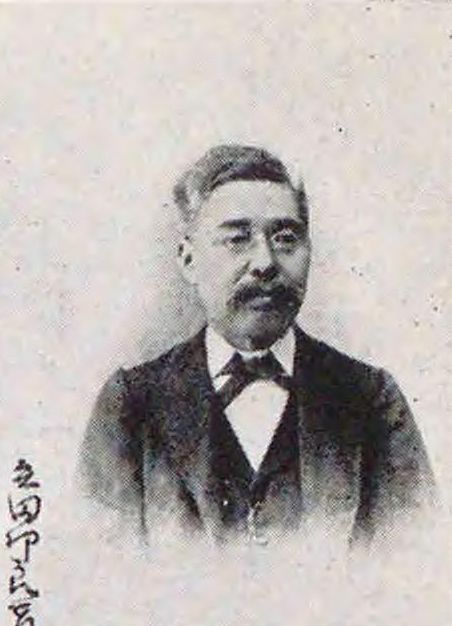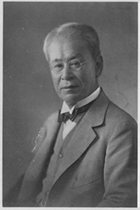
Botany in the Early Days and MAKINO Tomitaro
In the Edo period, knowledge of plants was treated as herbalism and natural history, medicinal plants were cultivated, and breeding was carried out for horticultural use. In the West, on the other hand, academic research and plant collecting (plant hunting) were in progress, and Japanese plants were "discovered" by foreigners and given scientific names according to the global standard.
In botany at the dawn of the Meiji period, the major goal was to collect, understand, and describe all plants that originated in Japan.
- For more information about the natural history during the Edo period, please visit the digital exhibition Fauna and Flora in Illustrations -Natural History of the Edo era-
Introduction of Botany
Before the establishment of the Department of Natural History in the Faculty of Science at the University of Tokyo in 1877, the herbalist ITO Keisuke and his students TANAKA Yoshio and ONO Motoyoshi were involved in botany as part of their work duties related to museums and expositions. Tanaka is also known as the "Father of the Japanese Museum."
They played a role in introducing modern Western botany to Japan by translating Western books and creating textbooks and introductory texts.
ITO Keisuke and the Koishikawa Botanical Garden
ITO Keisuke introduced Western botany to Japan in the Edo period. He translated Flora Japonica by Carl Peter Thunberg (1743-1828), which was given to him by Philipp Franz Balthasar von Siebold (1796-1866), published Tai-Sei Honzo Meisou in 1829, and created many botanical translations, as well as mapping scientific names to existing Japanese names.
In 1877, at the age of 75, Ito became an adjunct professor at the University of Tokyo and engaged in botanical work at the Koishikawa Botanical Garden, which became affiliated with the University of Tokyo. In the same year, he compiled the Koishikawa shokubutsuen somoku mokuroku (Catalogue of plants in Koishikawa Botanical Garden), in which the Japanese and scientific names of the garden's plants are listed, and also published Tokyodaigaku Koishikawa shokubutsuen somoku zusetsu (Illustrations of Plants and Trees in the Koishikawa Botanical Garden of the University of Tokyo), with colored plant illustrations and commentary, from 1881 to 1886.
小石川植物園草木目録
The National Diet Library holds approximately 2,000 books on herbalism collected by ITO Keisuke and owned by his grandson, Atsutaro, as the ITO Bunko "伊藤文庫."
Birth of the Department of Botany
In 1877, the Department of Botany in the Faculty of Science at the University of Tokyo was born. Despite the achievements of Ito and others, it was still not clear what scientific names had been assigned to Japanese plants. Under the leadership of YATABE Ryokichi, the first professor of the department, the botany department made numerous collecting trips to various parts of Japan, collecting plants, improving the range of specimens available, and comparing them with Western books in order to determine scientific names.
In 1884, he published Nihon shokubutsu meisho (Japanese botanical dictionary), which compared 2406 species that had already been given scientific names with their Japanese names. At the same time, he also catalogued the 3,000 specimens prepared by the Botany Department. These investigations formed the basis for the research that led to the development of full-scale botanical studies.
In 1887, with the cooperation of MAKINO Tomitaro and others, Yatabe published Shokubutsugaku Zasshi (The botanical magazine, Tokyo). In 1890, Makino became the first Japanese scientist to give scientific names to new species of plants in The botanical magazine, Tokyo. The following year, Yatabe declared in the journal that from now on Japanese plants would be named by Japanese scientists, and in fact, new plant names were announced one after another.
Yatabe also published Iconographia flora Japonicae in 1894, a compilation of the illustrations he had published to date.
The botanical magazine, Tokyo also contains many records of collections made by MIYOSHI Manabu, a student in the botany department.
MAKINO Tomitaro and Botanical Guides
MAKINO Tomitaro had been working in the Department of Botany since 1884 and contributed to the publication of The botanical magazine, Tokyo. However, he was not an official student at the University of Tokyo and was banned from the Botany Department. Nevertheless, he learned lithography, and in 1894, the same year as Yatabe's Iconographia flora Japonicae, he began publishing his own Nihon shokubutsu shi zuhen (Illustrated Guide to Japanese Plants).
In 1893, Makino was officially hired as an assistant professor in the Department of Botany by Professor MATSUMURA Zinso, who succeeded Yatabe as professor. Around 1900, as part of the university's project, he began publishing Dai Nihon Shokubutsu Shi (The History of Plants in Japan) and Shinsei Nihon Shokubutsu Zusetsu (Newly Selected Illustrated Guide to Japanese Plants) for a more general audience.
However, all of the scholarly books that depicted and recorded these plants, including Yatabe's Iconographia flora Japonicae, ceased publication after about 100 species, and could not become publications that would serve the purpose of recording all the plants of Japan.
Makino’s Illustrated Guide to Japanese Plants
Around 1907, many botanical books and illustrated guides were published for plant lovers and the general public. Makino was involved in many of these publications, including Shokubutsu Zukan (Botanical Illustrated Guide) with editor MURAKOSHI Michio, which contained 2,300 species of plants. He also published a new magazine for plant lovers.
In 1929, Makino and Murakoshi published Nihon shokubutsu soran (Japan botanical compendium) and Dai shokubutsu zukan (Large botanical illustrated guide), respectively, which could be considered as demonstrating their rivalry. Murakoshi published a series of botanical illustrated books with a strong editorial element. Makino, on the other hand, took his time to create new illustrated books and published Makino Nihon shokubutsu zukan (Makino’s Illustrated Guide to Japanese Plants) with 3206 species in an innovative layout that was completely different from existing illustrated books.
The frontispiece of Makino’s illustrated guide features a photograph of Makino proofreading the text. After the publication of the first edition, Makino continued to work on the manuscript, and it has truly become one of Japan's leading botanical illustrated books, continuing to be loved to this day through repeated revisions.
Related people
Link to the digital exhibition "Portraits of Modern Japanese Historical Figures"



